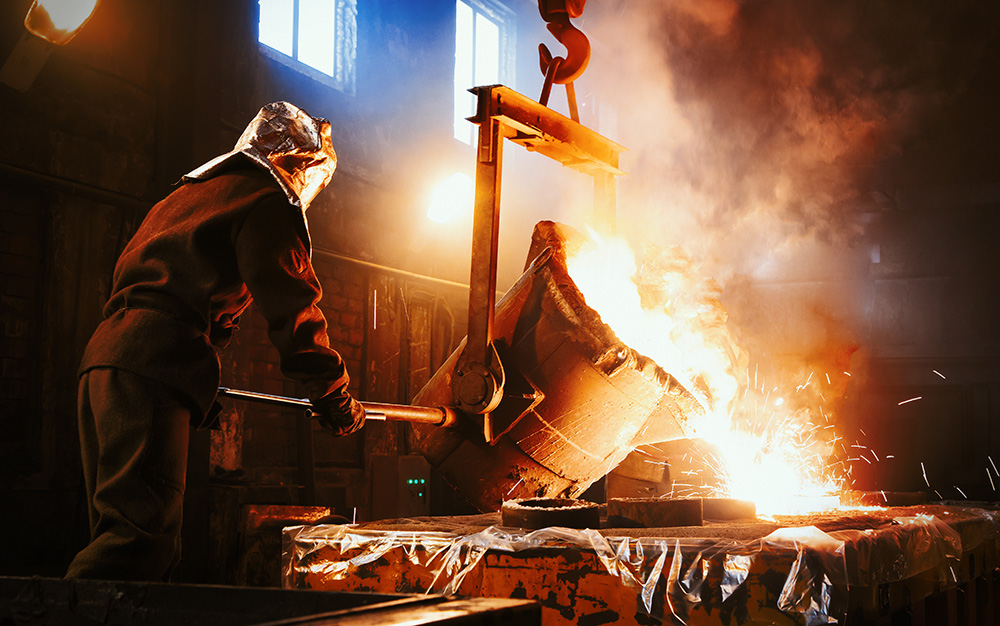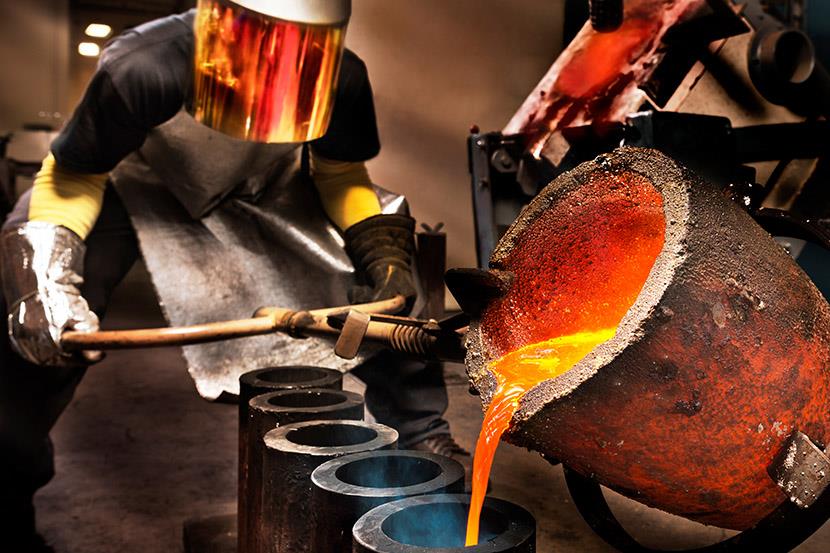Main difficulties faced by every Aluminum Foundry and how they’re overcoming them
Exploring the Duty of a Metal Foundry in Modern Production Processes
Metal foundries are pivotal in the landscape of modern production. They supply essential elements across different industries, adjusting to the needs of industries like auto and aerospace. Advanced strategies such as 3D printing and automated casting have changed their procedures. Furthermore, sustainability has ended up being a concern, affecting their practices. As these foundries progress, the implications for producing performance and development are considerable, questioning about their future trajectory in an ever-changing economic situation.
The Development of Metal Casting Strategies

With the surge of automation, foundries embraced approaches like die casting and shed foam casting, improving the manufacturing procedure and minimizing waste. Each development in metal casting strategies has accommodated the demands of various markets, from vehicle to aerospace. As metal casting remains to development, the interplay in between technique and modern technology stays crucial in meeting contemporary manufacturing obstacles, guaranteeing that foundries thrive and adapt in an ever-changing landscape.
Integration of Advanced Technologies in Foundries
Conventional metal casting approaches have served the market well for centuries, the integration of advanced modern technologies in foundries is transforming the manufacturing landscape. Automation and robotics simplify production procedures, boosting performance and decreasing the risk of human mistake. When impossible with traditional approaches, technologies such as 3D printing permit for quick prototyping and the development of complicated geometries that were. Additionally, information analytics and the Web of Things (IoT) allow real-time monitoring and anticipating maintenance, eventually bring about decreased downtime and boosted performance. These improvements additionally promote modification, permitting manufacturers to react rapidly to market demands. As sustainability ends up being a top priority, the adoption of ecologically pleasant innovations, such as electric melting furnaces and advanced sand recovery systems, further shows the industry's commitment to advancement. Collectively, these innovations not just improve functional effectiveness yet likewise position foundries at the leading edge of modern-day production techniques.
The Influence of Material Scientific Research on Foundry Workflow
Material science plays an essential duty in enhancing shop procedures, influencing both the choice of products and the general casting process. Developments in material science offer a deeper understanding of the homes of metals and alloys, making it possible for foundries to select one of the most ideal materials for specific applications. This understanding boosts the efficiency and sturdiness of cast items, which is essential for meeting market requirements.
Technologies in material formulas and ingredients add to boosted casting methods, lowering defects and enhancing production efficiency. The growth of sophisticated metal compounds and company website wise materials enables foundries to create lighter, stronger parts, which are progressively searched for in different fields such as vehicle and aerospace.
In addition, product scientific research aids in the recycling of metals, making procedures much more cost-efficient and efficient. By leveraging the most recent searchings for in material science, foundries can adapt to progressing market needs, ensuring their competitiveness in a quickly altering production landscape.
Sustainability Practices in Modern Metal Foundries
With the growing emphasis on ecological duty, contemporary metal foundries are increasingly implementing sustainability methods to reduce their eco-friendly footprint (Aluminum Foundry). One vital technique includes the recycling of scrap metal, which not just decreases waste however additionally saves energy and resources. Foundries are embracing advanced melting modern technologies that boost energy performance, consequently lowering greenhouse gas discharges. Furthermore, using eco-friendly finishings and products has acquired grip, further lowering unsafe discharges during manufacturing
Water preservation methods, such as closed-loop air conditioning systems, are being applied to reduce freshwater use. Many foundries are additionally purchasing renewable resource resources, like solar and wind, to power their procedures, consequently decreasing reliance on nonrenewable fuel sources. Staff training programs focused on sustainability practices promote a society of environmental recognition within the workforce. These initiatives collectively add to a much more sustainable future for metal foundries while meeting the demands of eco-conscious customers.
The Future of Foundries in a Changing Economic Landscape
As the worldwide economic situation progresses, foundries face a myriad of challenges and opportunities that will certainly form their future (Aluminum Foundry). The enhancing need for light-weight products and advanced alloys requires advancement in manufacturing methods and technical combination. Automation and clever production practices are ending up being important for boosting performance and decreasing operational expenses. On top of that, the increase of sustainability issues my link forces foundries to take on news greener processes and recycling initiatives, lining up with worldwide environmental objectives
The financial landscape is also moving, with supply chain interruptions and changing basic material costs presenting substantial difficulties. Foundries need to adjust by diversifying their supply resources and spending in materials science. In addition, partnership with sectors such as renewable power and electrical automobiles can foster development. Ultimately, the future of foundries will certainly depend on their capability to utilize technical improvements while continuing to be responsive to market characteristics and environmental imperatives, ensuring their importance in modern-day manufacturing.
Regularly Asked Inquiries
What Kinds of Metals Are Frequently Made Use Of in Foundries Today?
Frequently used steels in foundries today include light weight aluminum, iron, steel, zinc, and copper. These materials are preferred for their diverse residential properties, allowing a broad variety of applications in industries such as automotive, aerospace, and construction.
How Does a Shop Guarantee Quality Assurance in Its Products?

What Precaution Are Carried Out in a Metal Foundry?
Metal foundries implement precaution consisting of individual safety tools, ventilation systems to lower inhalation of fumes, regular safety and security training for staff members, emergency situation action protocols, and extensive tools upkeep to minimize hazards and assure a safe workplace.
Just how Lengthy Does the Metal Casting Process Generally Take?
The metal casting process generally takes a number of hours to days, relying on aspects such as the intricacy of the mold and mildew, the kind of metal made use of, and cooling down times. Each project's needs greatly affect the period.
What Industries Largely Depend On Metal Foundries for Production?
Automotive, equipment, aerospace, and building sectors largely rely upon metal foundries for production. These markets utilize cast steels for components, making certain sturdiness and performance essential for their corresponding applications in production and assembly procedures.
Metal foundries are crucial in the landscape of contemporary manufacturing. Aluminum Casting. Traditional metal casting techniques have actually offered the sector well for centuries, the integration of sophisticated modern technologies in foundries is changing the production landscape. Breakthroughs in product science give a deeper understanding of the buildings of steels and alloys, allowing foundries to pick the most ideal products for particular applications. With the growing focus on environmental responsibility, modern-day metal foundries are increasingly executing sustainability techniques to reduce their eco-friendly footprint. Automotive, construction, machinery, and aerospace markets mostly depend on metal foundries for manufacturing